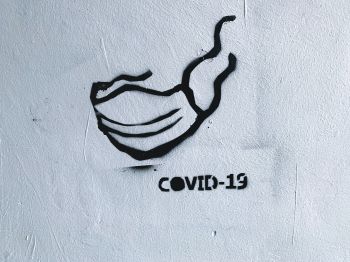
Photo credit: Adam Niescioruk on Unsplash
- Optimistic predictions that 'herd immunity' could be reached with fewer than 40 percent of the population infected or vaccinated should not be relied upon
- With no vaccine and the disease still prevalent, there is a risk of a false sense of security
- Lockdowns reduce and change the way the disease spreads rather than eradicate it
Mathematicians at the University of Sussex have warned the scientific community, government and the public about the risk of complacency over the level of 'herd immunity' required to stem the Covid-19 pandemic.
Some models have previously predicted that 'herd immunity' – where enough people have become immune to Covid-19 to stop it from spreading – could be reached with infection levels as low as 20 to 40 per cent. But a new paper from the University of Sussex urges caution to those taking comfort from these figures.
At the start of the outbreak, it was widely reported that herd immunity could be reached when around 60 per cent of the population had become immune. But it is known that disease-induced 'herd immunity' happens at a lower rate than vaccine-induced 'herd immunity', partly because the most active and vulnerable people get infected first. Viruses such as Covid-19 are seemingly drawn to the most vulnerable in our society – people in care homes, or those on the front line of public services for example – so with around 290,000 people infected in the UK, some scientists have predicted that 'herd immunity' could be reached at a much lower percentage. However, these predictions may not have taken into account that it is contact patterns between people, rather than the probability of transmission, that change in lockdown. For example, while transmission may decrease in schools and workplaces, in households family members may be more likely to infect each other.
Professor Istvan Kiss from the School of Mathematical and Physical Sciences at the University of Sussex, said:
"There is a real risk at this stage of the pandemic that people have been lulled into a false sense of security. In the absence of a vaccine, and with the virus still prevalent in the UK, people are still at great risk. In our new paper, we have created models which examine how changes in contact networks during lockdown affect the herd immunity level induced by the first wave of the epidemic. We found that if you consider the way patterns of contact change during lockdown then actually the level at which disease-induced 'herd immunity' is reached is higher than the most optimistic estimates we have seen. That's because, with many of the most vulnerable people rightly protected, a greater proportion of other people need to become immune. Ideally this happens through vaccination rather than infection, of course.
"In the models we studied, where 'herd immunity' was achieved at around 40 per cent when lockdown was implemented as a change in the probability of transmission, we found that if changes in contact patterns were used instead, then the level of herd immunity required to halt the spread of the virus increased by between 5 and 10 per cent - up to 45 or 50 per cent."
"Now that the UK has moved from a nation-wide lockdown to an expected series of local lockdowns, it is critical that those modelling the spread of the disease consider that personal networks are re-activating, and that they calculate how this could lead to individuals connecting to form clusters where super-spreading can occur."
"For that reason, I urge the public to continue to be cautious and observe social distancing rules and take all possible measures to reduce the chance of infection and transmission. At this stage of the pandemic, there is a risk of complacency. This pandemic still has a long way to run, and in the absence of a vaccine, we are nowhere near 'herd immunity'. For example, even though London has seen some of the highest rates of Covid infections, with perhaps nine per cent of the population infected, the vast majority of Londoners are still susceptible to infection."
Dr Joel Miller from La Trobe University in Melbourne, Australia, who co-authored the study said:
"Disease-induced 'herd immunity' occurs at a lower level of infection than vaccine-induced herd immunity in part because the highly active people get infected early on. The disease is more efficient than the vaccine at reaching the ones who spread infection the most. When control measures shield these key individuals more than others, the "benefit" of disease-induced 'herd immunity' is reduced."
Professor Luc Berthouze from the School of Engineering and Informatics at the University of Sussex, who co-authored the study, said:
"Our investigation of the impact of various lock-down interventions (school and business closures, social distancing) in an age-structured model with realistic contact patterns has shown that their effectiveness strongly depends on the heterogeneity of the contact patterns they affect. There is a need for better models to predict the impact of future interventions, including taking into account the vulnerability of the individuals involved and their contact structure. "
Professor István Z. Kiss worked with colleagues at the University of Sussex (Prof Luc Berthouze and Mr Francesco Di Lauro) in the UK and La Trobe University in Australia (Dr Joel C. Miller) and the Public Health and Social Research Unit at West Sussex County Council (Dr Matt Dorey) on their paper "The impact of network properties and mixing on control measures and disease-induced herd immunity in epidemic models: a mean-field model perspective" which is published in a pre-print and available on Arxiv archive for discussion.






